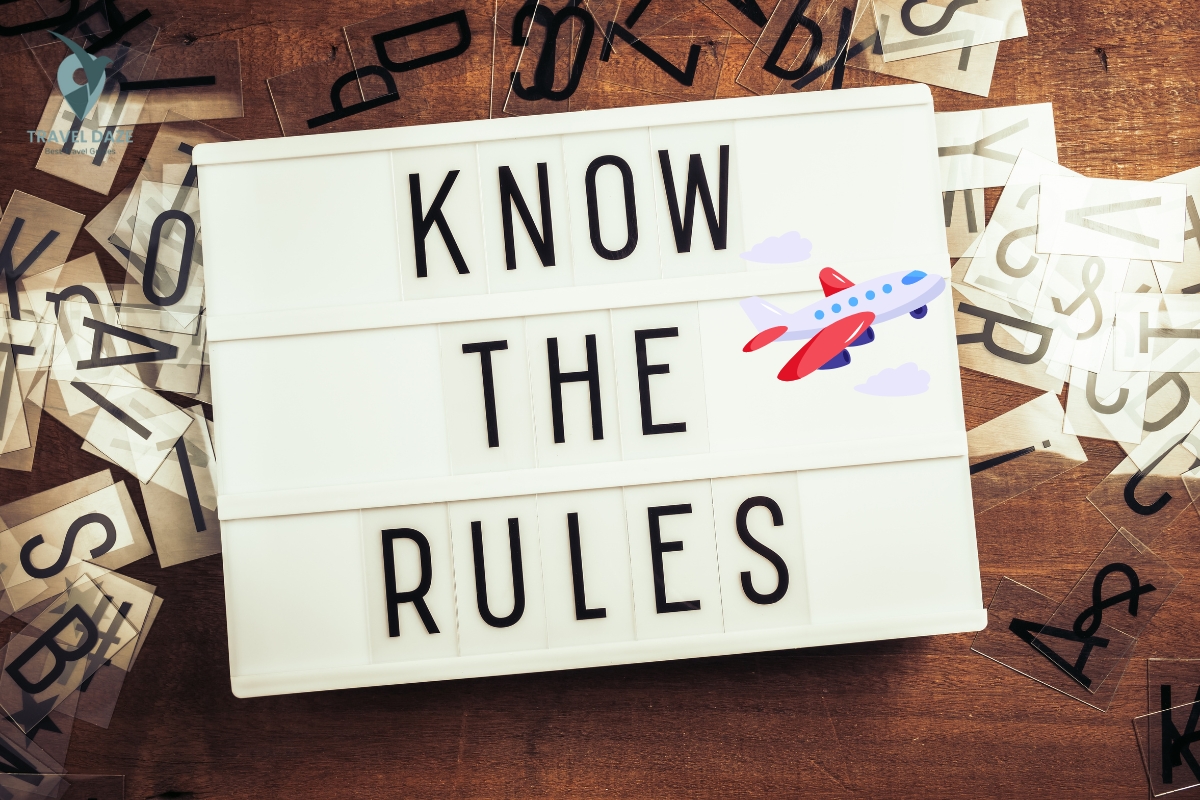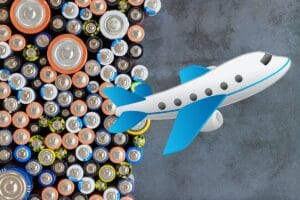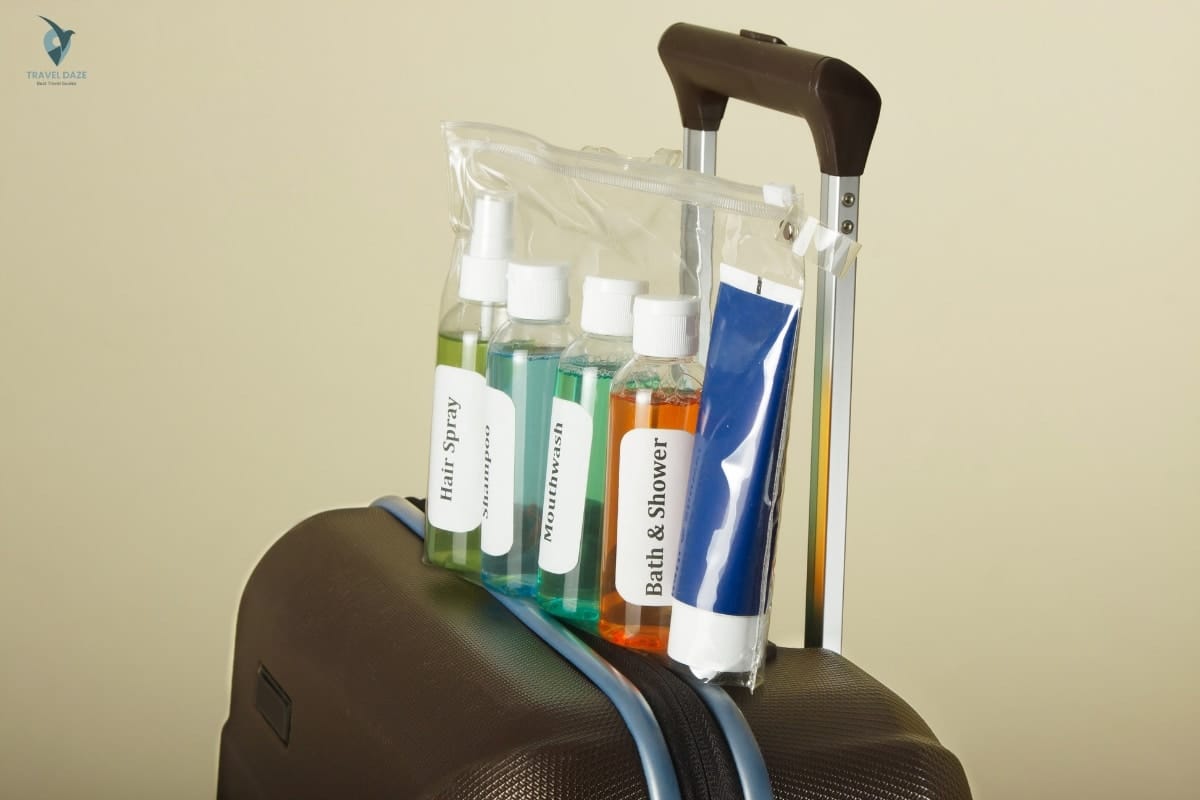Did you know nearly 20% of travelers get their carry-on checked for banned items at security? If you’ve been unsure in a TSA line about what you packed, you’re in good place. Knowing what can’t go in a carry-on can save you time and stress.
Table of Contents
ToggleFor those of us who fly often, our carry-on is more than just a bag. It must follow strict rules that affect our travel. It’s key to know these rules before packing to avoid surprises.
The TSA enforces regulations on a wide range of items, from liquids to seemingly safe but prohibited items. Some regulations are clear, while others could surprise you. Let’s look at these rules to make your next trip smooth.
Understanding the TSA Guidelines: The Basics
Getting through airport security is easier if you know the TSA guidelines. To pack your carry-on correctly and avoid hassles at the security line, follow these simple rules. Let’s look at some important tips to make your journey smoother.
Liquids and Gels
The 3-1-1 TSA rule is well-known. You can carry liquids and gels in containers up to 3.4 ounces, all in one quart-sized bag. Pack your essentials like shampoo and sunscreen, each under 3.4 ounces. This keeps you from throwing away your favorite items at the airport.
Sharp Objects
It’s important to know what sharp items are allowed in carry-ons. Knives are out, but items like nail clippers and razors are okay. Just make sure razor blades are in a cartridge. To avoid surprises, check the TSA’s website or app before traveling. Additionally, certain items like scissors are permitted, but the blades must be less than 4 inches long. When it comes to electronics, be mindful of the TSA lithium battery rules 2024, as they outline specific guidelines for carrying devices powered by lithium batteries. Staying informed about these regulations can save you time and stress at security checkpoints.
Food Items
The TSA is clear about what food is in your carry-on. Most solid foods are okay. Pack your favorite snacks, like sandwiches or nuts. However, spreadable or pourable foods must adhere to the 3-1-1 rule.
Your peanut butter or yogurt should be in small containers, all in one quart-sized bag. This way, you save money and enjoy your food during flights, following TSA rules.
| Item Type | Allowed | Restrictions |
|---|---|---|
| Liquids & Gels | Yes | 3.4 ounces, quart-size bag |
| Sharp Objects | Yes | Nail clippers and enclosed razors |
| Food Items | Yes | You can consume solid foods without restriction, and liquids and gels in 3.4 ounces. |
Specific Items Not Allowed in a Carry-On Bag
Before flying, remember some things can’t go in your carry-on. Keeping these items in checked bags makes airport security simpler. It avoids hold-ups and the risk of the TSA taking things away.
Aerosols
Aerosols like shampoo or body spray can go in carry-ons if they’re under 3.4 ounces. Anything bigger must go in checked luggage. The TSA does not allow big aerosols like hair spray in carry-ons. To avoid trouble, make sure all aerosols in your bag meet TSA’s rules.
Self-Defense Items
Items for self-protection, like pepper spray or stun guns, can’t be in carry-ons. You must place them in checked bags and inform the TSA of their presence. Keeping these out of your carry-on makes going through security easier.
Sporting Goods
Items for sports, like hockey sticks or golf clubs, can’t be in carry-ons. To follow TSA rules, they must have checked luggage. This way, bringing sports gear doesn’t cause problems. It ensures your travel is both safe and easy.
What is Not Allowed on a Plane Carry-On?
Knowing what you can bring in your carry-on makes flying easier. While many items are fine to take on board, there are rules. Items like alcoholic drinks and explosive materials have strict limits.
Alcoholic Beverages
If you want to bring drinks, know the limits. Both checked and carry-on luggage prohibits alcohol over 140 proof. The rule for carry-ons is a maximum of 3.4 ounces. So, check your limits before bringing strong spirits for a mid-flight toast.
Going over these limits could mean the TSA takes your drinks.
Explosive Materials
There is absolutely no allowance for explosive materials on planes. This rule covers everything from fireworks to replicas of bombs. Keeping everyone safe is the main goal, so these items can’t be on board. Packing smartly helps you avoid delays and security problems.

Special Cases: Medications, Baby Food, and More
Traveling with items like prescription medication, baby food, and frozen liquids can be tricky. But it’s key to know their specific rules to breeze through airport security.
Prescription Medications
When you fly, you can take your prescription medications onboard. The 3.4-ounce liquid rule does not apply to them. However, you must declare them separately and have them screened.
To make things faster, keep your medications in their original container. Also, having a doctor’s note or prescription can prove their need.
Baby Food
Traveling with a baby? You’ll be glad to hear that baby food, milk, and juice are okay in reasonable amounts. They are exempt from the standard liquid rules, but they must be presented to the TSA.
The officers will check these items on their own. This way, feeding your baby during the flight won’t be a problem.
Frozen Liquids
Frozen liquids, such as an ice pack, are allowed at security if they’re fully frozen. If they’ve started to melt, they must follow the 3.4-ounce rule. This keeps security tight without troubling those who need to carry frozen items, whether for health or other reasons.
| Item | Guideline |
|---|---|
| Prescription Medication | Must be declared and screened separately. |
| Baby Food | The TSA checkpoint requires the presentation of these items in reasonable quantities. |
| Frozen Liquids | If fully frozen, it’s acceptable; if not, it adheres to the 3.4-ounce guideline. |
Understanding these guidelines helps make your airport experience smooth. Always check the latest TSA rules before traveling to avoid surprises.
Conclusion
It’s very important to know TSA’s carry-on rules for a smooth airport trip. Knowing what to pack helps you avoid delays. It’s key for safe and easy travel for everyone.
Though airport security is strict, it’s for our benefit. Knowing rules about liquids, gels, sharp objects, and more is essential. Verify the most recent travel guidelines to confirm the permissibility of your items.
Understanding these rules prepares you for your next trip. Whether it’s your first flight or you’re a seasoned traveler, proper preparation makes your journey smooth. Remember these tips and pack smartly to fully enjoy your trip.








